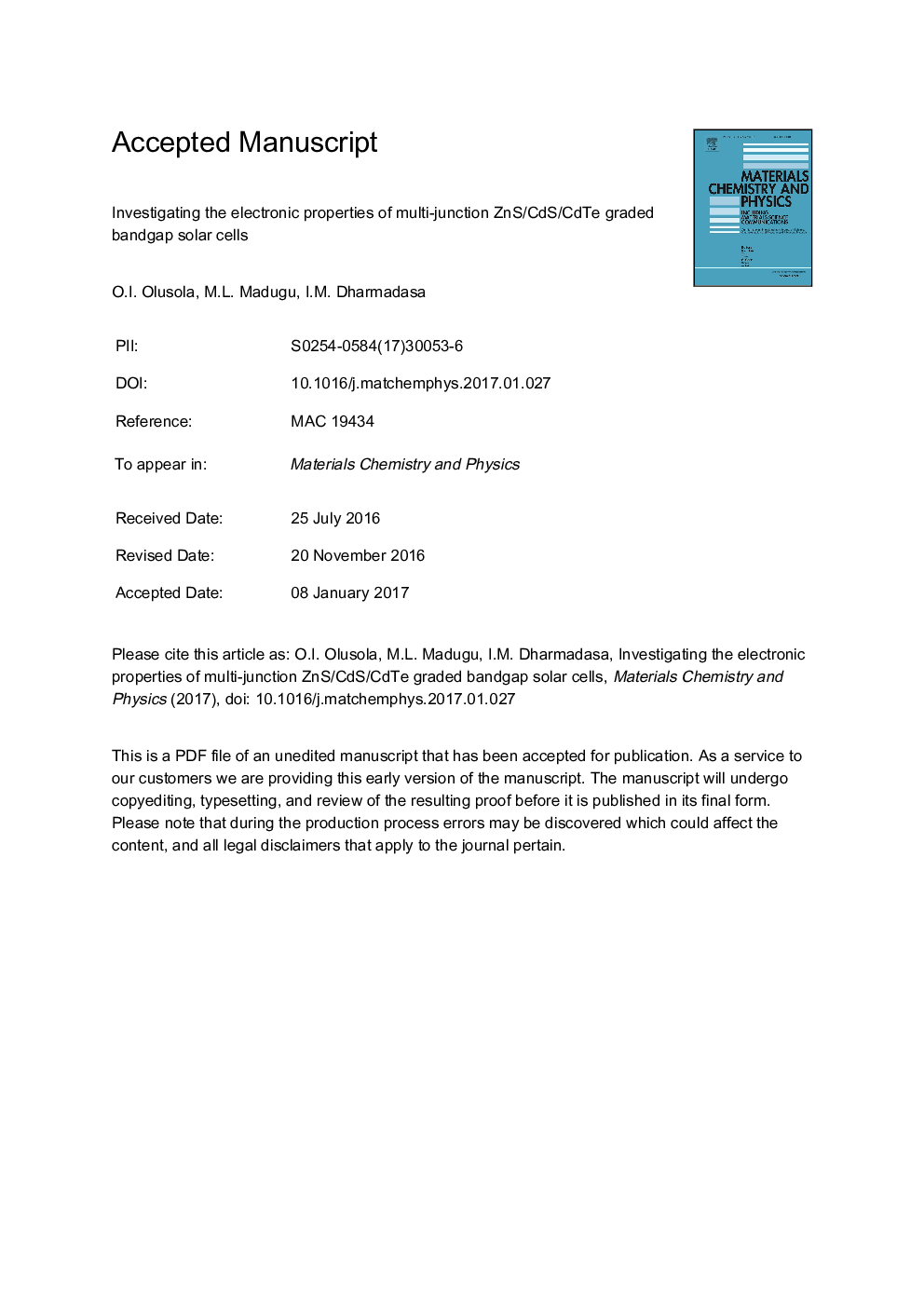| Article ID | Journal | Published Year | Pages | File Type |
|---|---|---|---|---|
| 5447872 | Materials Chemistry and Physics | 2017 | 21 Pages |
Abstract
The fabrication of multi-junction graded bandgap solar cells have been successfully implemented by electroplating three binary compound semiconductors from II-VI family. The three semiconductor materials grown by electroplating techniques are ZnS, CdS and CdTe thin films. The electrical conductivity type and energy bandgap of each of the three semiconductors were determined using photoelectrochemical (PEC) cell measurement and UV-Vis spectrophotometry techniques respectively. The PEC cell results show that all the three semiconductor materials have n-type electrical conductivity. These two material characterisation techniques were considered in this paper in order to establish the relevant energy band diagram for device results, analysis and interpretation. Solar cells with the device structure glass/FTO/n-ZnS/n-CdS/n-CdTe/Au were then fabricated and characterised using current-voltage (I-V) and capacitance-voltage (C-V) techniques. From the I-V characteristics measurement, the fabricated device structures yielded an open circuit voltage (Voc) of 670Â mV, short circuit current density (Jsc) of 41.5Â mAÂ cmâ2 and fill-factor (FF) of 0.46 resulting in â¼12.8% efficiency when measured at room temperature under AM1.5 illumination conditions. The device structure showed an excellent rectification factor (RF) of 104.3 and ideality factor (n) of 1.88. The results obtained from the C-V measurement also showed that the device structures have a moderate doping level of 5.2Â ÃÂ 1015Â cmâ3.
Keywords
Related Topics
Physical Sciences and Engineering
Materials Science
Electronic, Optical and Magnetic Materials
Authors
O.I. Olusola, M.L. Madugu, I.M. Dharmadasa,
